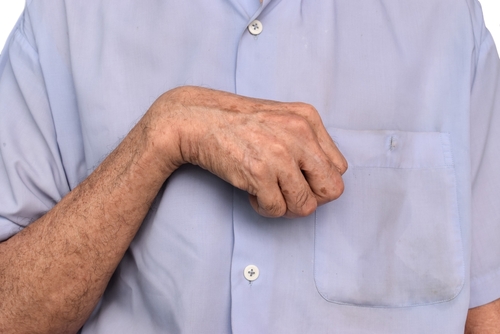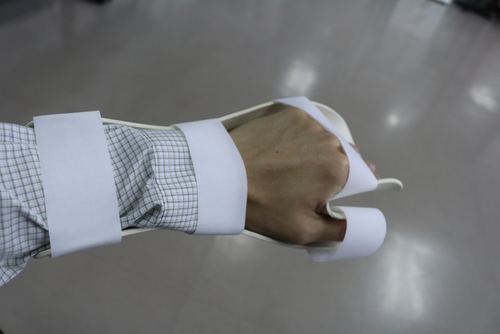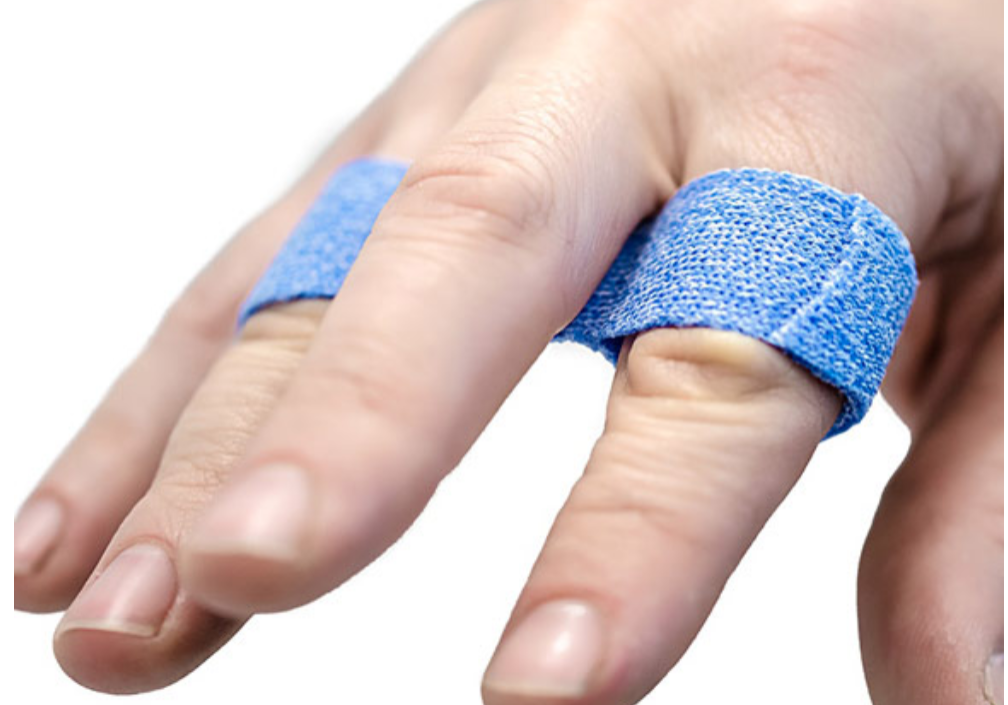Splinting vs Stretching after a Stroke to treat Hand Spasticity
Filed under Reviews
Splinting versus Stretching to improve hand function and reduce hand spasticity after stroke
Reference: Ahmad Khan, M., & Singh, P. (2018, February). Effect of Hand Splinting versus Stretching Exercises for Reducing Spasticity and Improving Hand Function in Poststroke Hemiplegia: A
Comparative Interventional Study. Retrieved December 4, 2022, from
https://www.ijotonweb.org/article.asp?issn=0445 -7706;year=2018;volume=50;issue=4;spage=125;epage=129;aulast=Khan

The Skinny: A comparative study by Khan & Singh (2018) aimed to compare the two most
common approaches practiced by hand therapists in treating post-stroke patients. The objective
of this study was to determine the difference between the effects of splinting and stretching in
reducing hand spasticity and improving hand function in post-stroke hemiplegia.
A total of 30 post-stroke hemiplegic patients from age 35-65 were recruited who met the following
criteria: according to the Modified Ashworth Scale (MAS) patients having tone of the affected
upper extremity at wrist and fingers ≥2 and having score of ≥25 on MiniMental State
Examination. Consecutive sampling was done by putting all odd-number patients in the splinting
group and all even-number patients in the stretching group. Assessment tools and outcome
measures were B and C subscales of Fugl-Meyer Assessment of physical performance for upper
extremity and MAS. The patients of the splinting group were given a resting hand splint to wear
for 10–12 h continuously per day for six weeks. Stretching exercise using a prolonged slow
stretch technique was carried out on patients of the stretching group.
In the Weeds: The inclusion criteria comprised of post-stroke hemiplegic adults, either right or
left hemiplegia, having high tone of the upper extremity at the wrist and fingers >2 according to
the Modified Ashworth Scale (MAS). Participants were excluded who had the presence of cognitive
and perceptual impairments, any cutaneous or joint pathology or contracture, and use any antiseptic
medications or hand splint before enrollment in the study. 15 participants in splinting groups
were given fabricated resting wrist-hand splints with maintaining all digits in extension at
metacarpophalangeal joints based on Bobath’s reflex inhibitory pattern. The splint was worn by
the participants for 10-12 hours intermittently every day for 6 weeks with expert supervision.
Passive Static stretching as per Bobath’s reflex inhibitory pattern was carried out for patients in
the stretching group 3–4 times a day and 5–6 days in a week for 6 weeks. During therapy, the wrist
joint was moved through the full range of motion by slow, sustained stretch to avoid the quick stretch
reflex. The hand was held in full extension as much as possible for 60 seconds with five repetitions. MAS, B and C subscales of Fugl-Meyer assessment were used. Changes in outcome
measures were done by using Wilcoxon signed-rank test.
Bringing it Home: Wilcoxon signed the rank test for MAS for wrist and finger flexors and FMA-UE scores of splinting and stretching show significant improvement in both groups. While Mann-Whitney U-test for MAS of wrist and finger flexors and FMA-UE show no statistically significant difference of
improvement in both groups
Rating: This study receives a 3/5 rating. The small sample size and short treatment time are the
shortcomings of the study. However, the results show a significant reduction in spasticity and
improved hand function in participants for both groups. Although the difference was statistically
not significant, the splinting group patients did clinically better than the stretching group.

More To Read
Arteriovenous Malformation (AVM hand)
By: Amalia Garcia Introduction After completing three weeks of my Level II hand therapy rotation, I have seen a wide variety of common upper extremity injuries such as carpal tunnel syndrome, distal radius fractures, mallet finger, flexor tendon lacerations, arthritis, and more. One condition that stood out to me was one that I hadn’t heard…
Read MoreIs therapy needed after a distal radius fracture?
Coughlin T, Norrish AR, Scammell BE, Matthews PA, Nightingale J, Ollivere BJ. Comparison of rehabilitation interventions in nonoperatively treated distal radius fractures: a randomized controlled trial of effectiveness. Bone Joint J. 2021Jun;103-B(6):1033-1039. doi: 10.1302/0301-620X.103B.BJJ-2020-2026.R1.Epub 2021 Apr 30. PMID: 33926211. The Skinny: Individuals with distal radius fractures are very common in the hand therapy world. This…
Read MoreA randomized clinical trial comparing early active motion programs: Earlier hand function, TAM, and orthotic satisfaction with a relative motion extension program for zones V and VI extensor tendon repairs
By Brittany Day Collocott SJ, Kelly E, Foster M, Myhr H, Wang A, Ellis RF. A randomized clinical trial comparing early active motion programs: Earlier hand function, TAM, and orthotic satisfaction with a relative motion extension program for zones V and VI extensor tendon repairs. Journal of Hand Therapy. 2019. doi:10.1016/j.jht.2018.10.003 The Skinny- This is…
Read MoreSign-up to Get Updates Straight to Your Inbox!
Sign up with us and we will send you regular blog posts on everything hand therapy, notices every time we upload new videos and tutorials, along with handout, protocols, and other useful information.





